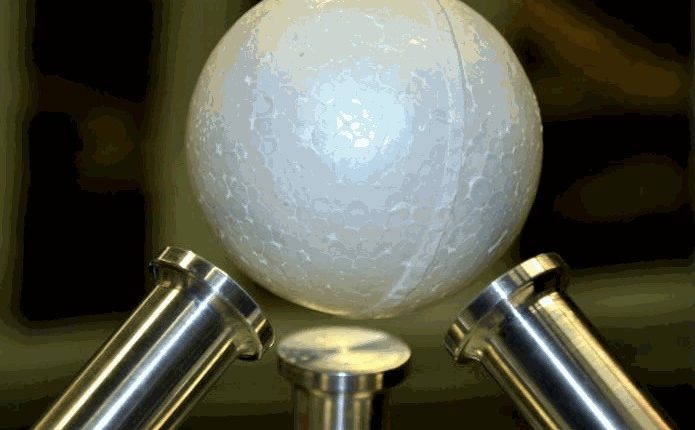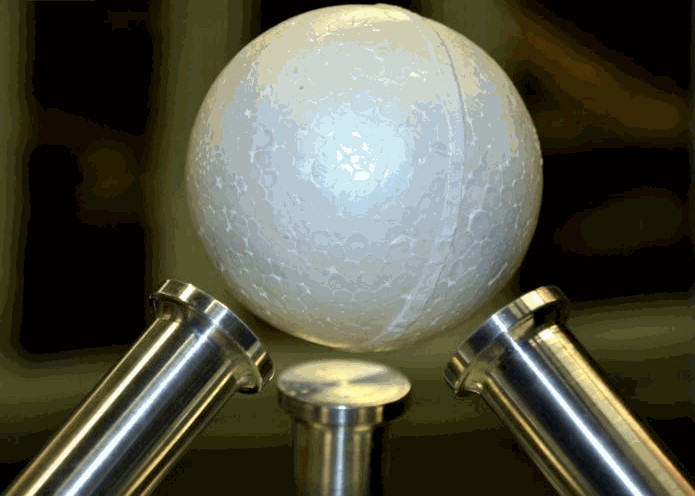
Researchers use sound waves to levitate a sphere
Levitation would be a pretty cool skill to have and thanks to researchers University of São Paulo in Brazil and Heriot-Watt University in Edinburgh, Scotland, we’re one step closer to figuring out how to do it.
The researchers were able to levitate a large sphere using sound waves that were much smaller than the actual object.

The polystyrene sphere, 50 mm in diameter was 3.6 times the size of the wavelength of the sound waves that lifted it. The team achieved this feat using three 25-kHz ultrasonic transducers configured in a tripod fashion. This method created a standing wave between the transducers and the sphere.
Their work proves that acoustic levitation is not restricted to particles that are smaller than a half wavelength, as previously thought. With a traditional standing wave levitator, small particles get trapped at the pressure nodes and levitating a large spherical object would occur because a standing wave is produced between the transducers and the object itself. However, using three ultrasonic transducers in their tripod fashion, the researchers achieved complete 3D stability — both laterally and axially, allowing the levitation of a large sphere in air, without any contact with solid surfaces.
Though the team opted to levitate a sphere, they say that levitation is not limited to this shape or size.
They speculate that their levitation concept could have future applications in material handling and processing in space.
“One particular application is in the trapping of large liquid samples in microgravity, which could be achieved by placing different transducers around the liquid sample. In contrast with Earth’s environment where the surface tension limits the maximum drop size that can be levitated, the acoustic forces in a microgravity environment can be considerably reduced such that surface tension dominates, thus allowing the handling of large liquid samples,” they write in their paper “Acoustic levitation of a large solid sphere,” detailing the work.
Another potential application could be for handling materials with incredibly high temperatures without actually touching them.
“At the moment, we can only levitate the object at a fixed position in space. In future work, we would like to develop new devices capable of levitating and manipulating large objects in air,” Marco Andrade from the University of São Paulo told Phys.org.

Comments are closed, but trackbacks and pingbacks are open.